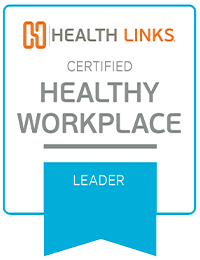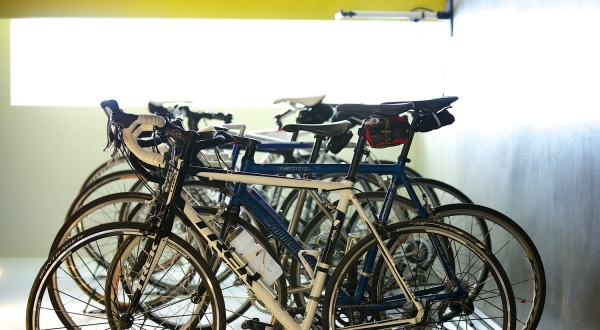
BOA has grown exponentially in the past few years and they have set their sights on something larger than they ever have before for their wellness program: a website. The Boa Wellness website is a place where all employees have the opportunity to earn and log points for basic, everyday wellness practices: drinking water, resisting office candy, flossing, meditating, massage, eating vegetables, getting 8+ hours of sleep, volunteering, gym-based activities, commuting on foot/bike, etc., as well as the ability for each user to set specific goals.
Their website is unique and innovative because they built it around the needs of their users, they made it easy to use on a computer or mobile device, it is customized to the activities of their users, they financially back the program to encourage participation with incentives, and they evolved the program as their company grew based on feedback from their users.
They built this website for their specific population but quickly realized its potential to benefit other companies looking to do something similar. The website is fully customizable and they have made it FREE to any company interested in using it as a part of their wellness program.
Health Links (HL): Why did your business decide become a Health Links Certified Healthy Business?
BOA Techonology (BOA): Health Links Colorado provides the support we need to continue promoting overall health and wellness to our employees and community on the Taxi Campus. Boa is a super fit organization as a whole, but we can always find new ways to bring our employees to the next level, and Health Links helps us do just that.
HL: What benefits did the certification bring to your business?
BOA: The certification helped confirm to us that we’re doing something right! At Boa, we also want to help other companies introduce Health & Wellness to their organization, and through the certification, we’ve been able to make some great connections with other companies. Building our H&W program from the ground up, we’ve been able to work out a lot of the kinks that come with that, and have turned out a very successful program; and have now made our H&W Website available to other companies for FREE!
HL: Has this certification changed the way your business thinks about wellness and safety?
BOA: The Health Links Healthy Business Leader Certification has amplified our health and wellness program. There is a fair amount of healthy pressure in being a community leader, which has lead to a continuous conversation about how we can continue to improve year after year, especially as we grow larger as a company.
HL: Has the Health Links certification or your wellness program affected your surrounding community?
BOA: We focus on overall heath, which includes Community Health, so part of the focus of our H&W Program is to do good in the community. We include volunteering as part of our program, and volunteering both individually and as a company. We also choose an organization each year to focus on for charitable giving. And this year, we will start a Boa Sponsored 5K run/walk, where the proceeds will also be donated to a selected charity.
Why is the health and wellness of your employees important to you?
Healthier employees are happier; they can focus more on the tasks at hand, and more on interactions with other employees than on health issues. Creating this program often has the side effect of employees participating together in healthy activities and building camaraderie. The program also brings attention to health and wellness and makes it a subject of conversation. Employees talk about it, they share information, methods, recipes, thoughts, etc., and they engage in a dialogue on these topics that is beneficial to everyone. It also creates a little bit of healthy peer pressure to engage in healthy activities, and it makes people more comfortable doing so.
Tell us about your worksite wellness activities/program.
We try to make our program very customizable. We have a log that people can fill out (called maintenance log) and receive points for activities ranging from physical exercise, to mental health activities, and preventative care. We also allow people to submit custom goals that may not be included on the sheet, and to submit things as diverse as financial health goals. These goals are reviewed by a committee of employees and assigned a point value. For completion of a goal or maintenance activity, participants receive points. These points can be redeemed, up to a capped value, for prizes. We have a prize catalog, but participants can also request prizes that may not be included in the catalog. We also supplement this program with “lunch and learns” every one to two months, covering topics such as nutrition, relaxation, etc. We try to do at least one company-wide trip per year. Last year we did the 24 Hours of Moab mountain bike race and had five teams!
How do you measure the success of your program?
We have a pretty high participation rate among employees. We’ve also gotten employees to participate who were not previously very active. Based on complaints that we receive about the program, and constructive criticism, it is obvious that people are “invested” in the program. We also do our best to send out surveys every few months to receive feedback on how to improve the program.
What obstacles did you have to overcome to get your program started? How did you overcome them?
One obstacle was time―the amount of time investment from the Health & Wellness (H&W) committee members, and the amount of time required for an employee to submit a goal for consideration. Tools, such as the maintenance log, helped overcome this by streamlining the process for employees to receive points for common activities that many people engaged in. This reduced the need for goal submission and reduced the burden on committee members to review so many goals. We have also developed a web interface that employees can use to easily submit goals and track their points. Another obstacle was receiving more information on finance or health conditions that we were comfortable with, and making sure to keep information private.
We developed tools like a weight loss calculator that provided a percent value, and a financial goal calculator that provided a debt-to-income ratio. The employee fills out the worksheet, and then provides the end number to the committee for consideration. This way the committee is reviewing a percent improvement, rather than a hard number that may be sensitive (such as an employee’s income or debt burden, or an employee’s weight). It also allows employees to be awarded points more equitably relative to one another, even though the actual values they are entering into their worksheets may be dramatically different.
What tip/advice would you give to a business that is considering starting a worksite wellness program?
Do not underestimate the obstacles described above. Also, remember that you will not make everyone happy all the time with the program—but be open to changes in the program that will improve the user experience. It is a fine line between encouraging and discouraging people if the competitiveness within the program is too high. Try to provide some competitive features for people who respond well to that, but also some non-competitive personal rewards for people who are turned off or discouraged by competition. Health and wellness is a personal issue for many people, and they need to be rewarded on a personal or individual level, independent of other participants’ performance.

